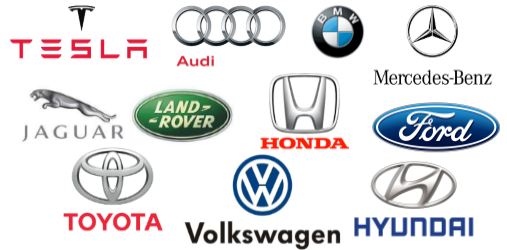
Ever since the introduction of commercial cars, the automotive industry has continuously innovated safer, “greener” and more affordable vehicles - but technological advancements have been incremental. In recent years, however, the industry has undergone substantial change with the rise of autonomous technology. Major automakers have been investing heavily in R&D and predict that within 5 – 10 years, full-scale autonomous vehicles (AVs) will be roaming the streets in the form of personal and public transportation. It is important to note, though, that governmental support is required in making this feat possible. One of the most supportive countries has been none other than Dubai, launching the Dubai Autonomous Transportation Strategy for Dubai’s future autonomous transportation. The project’s goal is to transform 25% of Dubai’s transportation to autonomous vehicles by 2030, increase productivity by reducing travel time and decrease road accidents significantly. It is this type of support that motivates automakers to invest in AV technology.
Blast to the Past
Today’s automotive technology contains pieces of tech history in almost every aspect, including latest autonomous innovations.
Since the 1900’s, several individuals have contributed to autonomous technology. In 1945, Ralph Teetor, fed up with his driver’s sporadic driving, invented a “speed control device” known today as cruise control.
Then in the 1960s, James Adams, a Stanford engineering graduate student, began developing the world’s first self-driving vehicle. Known as The Cart, it was eventually equipped with cameras and programmed to detect and autonomously follow a solid white line on the ground. Today, cameras remain a vital element of AVs.
Another important step forward in autonomous technology originated from German engineer Ernst Dickmanns’ “dynamic vision,” which was an imaging system capable of filtering out extraneous “noise” allowing focus on relevant objects around the vehicle. This type of imaging is crucial in helping self-driving vehicles identify external potential hazards.
Another contributor to autonomous technology is General Atomics’ unmanned Predator drone, which has been self-piloting for over 20 years. Most drones are decked out with various technologies that have now been adapted to cars. These include radars and thermal imaging cameras that enable travel by night. Drone technologies have been the core building blocks in developing today’s AV self-navigating system.
What’s Under the Hood?
So how do AVs work? They follow a "sense-plan-act" approach. A suite of sensors, cameras and radars are in charge of guiding the vehicle and gathering data from its environment. This data is then interpreted by software algorithms stored on the vehicle’s main computer. Finally, the data is converted into commands for vehicle steering, throttle and brakes. Below is a brief illustration of a vehicle’s autonomous system:

There is much more to autonomous systems than meets the eye. AV systems rely heavily on artificial intelligence and machine learning to make informed decisions and differentiate surroundings. Machine learning algorithms employed are based on object tracking and sophisticated pattern recognition algorithms are designed to improve the accuracy of distinguishing between objects, for example, whether an object is another vehicle, pedestrian, bicycle, or even an animal. AV systems are constantly analyzing the environment and feeding perceived images into the algorithm. The images are examined and then the nature of the objects is classified. These algorithms allow the vehicle to “learn” object characteristics such as movement, size and shape in order to classify future images with higher accuracy.
All this technology is what categorizes a vehicle’s autonomous capabilities. There are five different AV system autonomy levels; below is a brief description of each:
Level 0: This level is basically zero autonomy. The driver completely controls steering, brakes and throttle.
Level 1: This level includes driver-assistance tech but most functions are still controlled by the driver. This level may include your basic cruise-control features.
Level 2: At least one driver assistance system is fully automated. Features like advanced cruise control and lane-centering technology usually exist. These features allow the driver to be fully disengaged from physically operating the vehicle, however, must always be ready to intervene if needed.
Level 3: Drivers are still necessary in level 3 cars, but are able to completely shift "safety-critical functions" to the vehicle under certain traffic and environmental conditions. This means that the driver is still present but is not required to monitor the situation in the same way it does for the previous levels. Tesla vehicles currently offer Level 3 autonomy, where the car is able to monitor speed, steering, lane switching and lane centering entirely on its own.
Level 4: This is considered fully autonomous driving where driver intervention may be non-existent. Level 4 vehicles are designed to perform all “safety-critical functions” and monitor roadway conditions for an entire commute, from point A to point B. However, this level of autonomy may not cover every driving scenario.
Level 5: This refers to a fully autonomous system where vehicle performance is equal to that of a human driver, there is no need for a driver to be present since no driver intervention is needed whatsoever. Level 5 autonomy supports every driving scenario possible, including extreme environments and terrain.
Race to the Finish
The cutthroat competition among automakers has peaked as the race to introducing the first fully autonomous vehicle gets closer. Tesla, as a first-mover in the industry, released Tesla Autopilot (its first autonomous technology) on their Tesla Model S back in 2014. Their achievements this far have attracted much competition from automotive and non-automotive companies alike. Main competitors such as Audi, BMW and Mercedes have all showcased their autonomous flagship cars with much success.
“The all-new E-Class successfully conducted the first ever highly-automated drive in the Middle East on the E11 highway from Dubai to Abu Dhabi on November 4th 2016”
Lennart Mueller-Teut, Head of Marketing & Communications for Mercedes-Benz Middle East.
It is important to note, however, that automakers have different visions concerning AVs. Ford for example, has invested huge capital in autonomous research and development. Their focus, however, is on ride-hailing/sharing services, recently announcing their intention of delivering a high-volume of these fully autonomous level-4 vehicles by 2021. Other non-automotive companies participating in the race include Apple, Google & Intel. Their attention, on the other hand, is on developing advanced autonomous systems, partnering up with automakers to develop their cars. Below are few of the key market players:
Implications
AVs represent a major breakthrough in automotive innovation, but their potential impact on society remains ambiguous. Below are some of the ultimate impacts AV’s could have on economy, mobility, and society as a whole.
Car insurers may need to shift their business model
For the longest time, car insurers have provided coverage to customers in the event of road accidents caused by human error. With the introduction of AVs, auto insurers will need to shift the core of their business model and focus on insuring car manufacturers from liabilities due to technical failure instead; this opens up an entirely new business but may prove problematic to insurance companies.
Supply chains will be reshaped
A positive impact of autonomous technologies is the optimization of supply chains and logistic operations around the globe. As businesses employ automation - efficiency, flexibility and productivity will increase while reducing overall labor cost.
Road accident rates will drop
Along with today’s AV safety precautions, further R&D will decrease motor-vehicle accidents significantly. As more advanced AVs slowly become readily available to the public, less driver intervention will result in less human error and breach of law, which will ultimately decrease road accidents.
Conclusion
As surreal as driverless cars may seem, the autonomous technology bandwagon is continuously growing and automakers hope to make their driverless cars available to the public as soon as 2020. Now, the thought of sitting back and relaxing during your daily commute is great and all but like everything in this world, nothing is perfect. Below are few of the most common arising issues that have yet to be solved for AVs:
- Struggling in bad weather conditions: During heavy snow or rain LiDAR sensors and cameras have a difficult time seeing lane markers and other objects that help them drive safely.
- Struggling on roads without clear lane markings: Lane markings are the basis for guiding driverless cars, so when they can't be distinguish, it becomes nearly impossible for AVs to operate or change lanes safely.
- Navigating in the city: Cities contain pedestrians, cars, potholes, traffic cones and a whole mess of other variables. All of these obstacles may be too much for cars to keep track of and safe driving becomes compromised.
- Country regulations: With the introduction of AVs, new regulations need to be implemented.However,inconsistent regulations around the world will pose a dilemma. Each country may have different laws and regulations, making it difficult for manufacturers to match them all.
Latest Business
Intelligence Report















